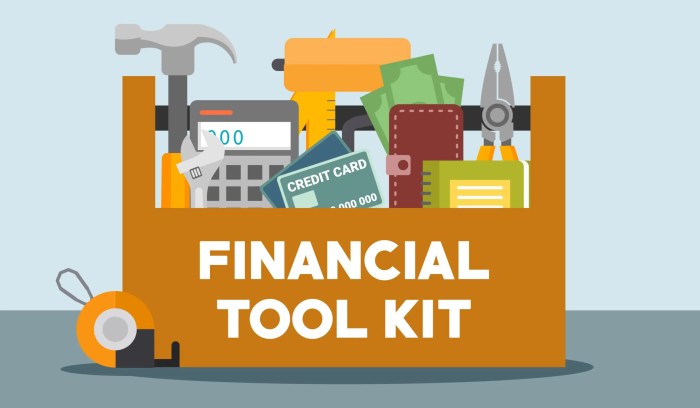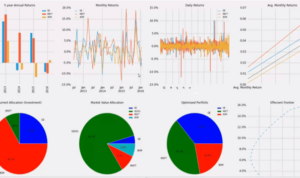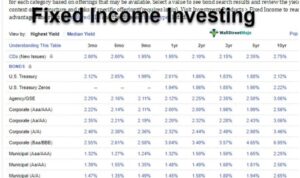Diving into the world of Financial tools for budgeting, get ready for a rollercoaster ride of money management like you’ve never seen before. From apps to spreadsheets, we’re about to break down everything you need to know in a way that’s as cool as a high school hipster.
Let’s navigate through the maze of financial tools and budgeting strategies to help you take control of your personal or business finances with style and swagger.
Definition and Importance of Financial Tools for Budgeting
Financial tools for budgeting are software or applications designed to help individuals or businesses manage their finances effectively. These tools provide various features such as expense tracking, budget creation, goal setting, and financial analysis to help users make informed financial decisions.
Importance of Using Financial Tools for Budgeting
Using financial tools for budgeting is crucial for effectively managing personal or business finances. These tools help individuals or businesses track their income and expenses, create realistic budgets, identify areas of overspending, set financial goals, and ultimately improve financial health.
- By providing a clear overview of financial transactions, these tools enable users to make informed decisions and adjust their spending habits accordingly.
- Financial tools for budgeting also help in setting achievable financial goals and tracking progress towards them, fostering financial discipline and accountability.
- Moreover, these tools often offer insights and reports that allow users to analyze their financial habits and make necessary adjustments to achieve financial stability.
Examples of Popular Financial Tools Used for Budgeting
Some popular financial tools used for budgeting include:
- Mint: A free personal finance app that allows users to track expenses, create budgets, and receive personalized money-saving tips.
- You Need a Budget (YNAB): A budgeting software that focuses on giving every dollar a job, helping users prioritize spending and reach financial goals.
- Quicken: A comprehensive financial management tool that offers features for budgeting, investment tracking, and bill payment management.
Types of Financial Tools for Budgeting
Budgeting tools come in various forms to help individuals and businesses manage their finances effectively. Let’s explore some of the different types of financial tools available for budgeting:
1. Budgeting Apps
Budgeting apps are software applications designed to help users track their income, expenses, and savings goals in real-time. These apps often come with features such as expense categorization, bill reminders, and financial goal setting. Popular examples include Mint, You Need a Budget (YNAB), and PocketGuard.
2. Budgeting Software
Budgeting software is more comprehensive than apps and typically offers advanced features for budget planning, forecasting, and analysis. These tools may include customizable budget templates, financial reports, and investment tracking capabilities. Examples of budgeting software include Quicken, QuickBooks, and Personal Capital.
3. Spreadsheets
Spreadsheets like Microsoft Excel or Google Sheets are versatile tools that can be used for budgeting purposes. Users can create personalized budget templates, input financial data, and perform calculations to monitor their spending and savings. While spreadsheets offer flexibility and customization, they may require more manual input and maintenance compared to dedicated budgeting apps or software.
4. Online Banking Tools
Many banks and financial institutions provide online banking tools with built-in budgeting features. These tools allow users to view their account balances, track transactions, set financial goals, and receive alerts for unusual spending patterns. While convenient for those who prefer to manage their finances within their banking platform, these tools may have limitations in terms of budgeting functionalities compared to standalone apps or software.
5. Envelope System
The envelope system is a traditional budgeting method where users allocate cash into physical envelopes labeled with different spending categories. This method helps individuals visualize and control their spending in each category. While not a digital tool, the envelope system can be an effective budgeting technique for those who prefer a tangible and hands-on approach to managing their finances.
Overall, each type of financial tool for budgeting has its own set of advantages and disadvantages. It’s essential to choose a tool that aligns with your financial goals, preferences, and level of comfort with technology to effectively manage your budget and improve your financial well-being.
Best Practices for Using Financial Tools for Budgeting

When it comes to managing your money like a boss, using financial tools for budgeting can be a game-changer. Here are some best practices to make the most out of these tools and keep your finances on point.
Set Clear Financial Goals
- Before diving into budgeting, take some time to establish your financial goals. Whether it’s saving for a big purchase, paying off debt, or building an emergency fund, having clear objectives will help guide your budgeting decisions.
- Use
SMART goals
to make sure your financial goals are Specific, Measurable, Achievable, Relevant, and Time-bound.
Track Your Expenses Regularly
- Keep a close eye on your spending by tracking your expenses regularly. This will give you a clear picture of where your money is going and help you identify areas where you can cut back.
- Utilize tools like expense tracking apps or spreadsheets to make this process easier and more efficient.
Create a Realistic Budget
- When setting up your budget, make sure it is realistic and aligns with your financial goals. Avoid setting overly strict budgets that are difficult to stick to, as this can lead to frustration and eventually giving up on budgeting altogether.
- Allocate funds for essential expenses, savings, debt payments, and discretionary spending to create a well-rounded budget.
Review and Adjust Your Budget Regularly
- Don’t set it and forget it! Regularly review your budget to ensure you are staying on track with your financial goals.
- Adjust your budget as needed based on changes in your income, expenses, or financial priorities.
Avoid Lifestyle Inflation
- As your income increases, resist the temptation to inflate your lifestyle and instead prioritize saving and investing for the future.
- Use financial tools to help you stay disciplined and avoid falling into the trap of spending more as you earn more.
Integrating Financial Tools with Personal Financial Goals
Financial tools play a crucial role in helping individuals align their budget with their financial goals. By utilizing these tools effectively, individuals can track their progress towards savings, debt reduction, or investment goals, ultimately leading to better financial outcomes. Regularly reviewing and adjusting budgets using financial tools is essential to ensuring that individuals stay on track towards achieving their financial goals.
Tracking Savings Goals
- Financial tools such as budgeting apps or software can help individuals set specific savings goals, whether it’s for an emergency fund, a vacation, or a major purchase.
- These tools can track monthly savings contributions and provide visual representations of progress towards reaching the set savings goals.
- By regularly monitoring savings targets using financial tools, individuals can make necessary adjustments to their budget to ensure they stay on course.
Monitoring Debt Reduction
- Financial tools like debt payoff calculators can assist individuals in creating a plan to pay off their debts efficiently.
- These tools can show the impact of making extra payments towards debt and help individuals visualize their debt reduction progress over time.
- Regularly reviewing debt reduction goals with financial tools can motivate individuals to continue working towards becoming debt-free.
Tracking Investment Progress
- Investment tracking tools can help individuals monitor the performance of their investment portfolios and track progress towards achieving investment goals.
- These tools can provide insights into the performance of individual investments, asset allocation, and overall investment growth.
- By using financial tools to monitor investment progress, individuals can make informed decisions about rebalancing their portfolios or adjusting their investment strategy as needed.






